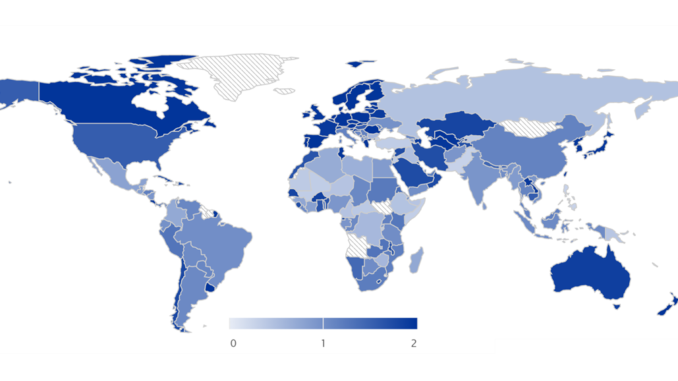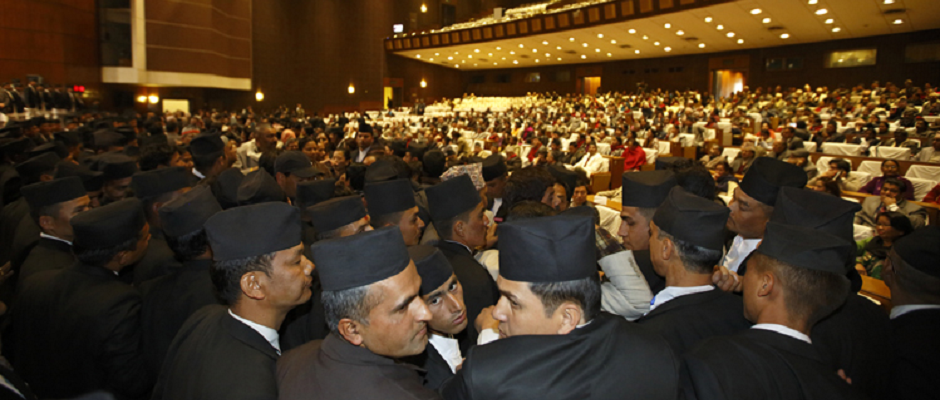
Social scientists working on decentralization and subnational governance are limited in their work by the paucity of data on subnational institutions and practices around the world.
In fact, there are few–if any–data sources that provide global time series data about subnational democratic institutions and practices.
Most sources of subnational information examine subnational revenues and expenditures, subnational functional powers, or subnational administrative structures, but not the state of subnational democratic institutions or processes. Nearly all datasets that do focus on subnational democracy provide data for only one part of the world. Those sources that do cover numerous parts of the world generally do not include all countries and provide data for only one year or a short time period. An additional problem is that data are often not comparable across countries.
To address the lack of data, the Varieties of Democracy research project has prepared a new dataset of democracy and governance indicators that contains 22 subnational different measures of subnational democracy and governance.
Conceptualization of subnational democracy for V-Dem
For a territory within a country to be characterized as more or less democratic, it must exist as an administrative unit with its own government. Subnational government makes subnational democracy possible while also contributing to the extent of democracy in a country. Proximity of government can facilitate citizens’ political engagement and thus increase the extent of participation in the country. This reflects the view of democracy that emphasizes participation.
The subnational government is more democratic if its offices are elected through free and fair elections. This follows from the electoral principle of democracy, and it promotes the participatory principle of democracy by allowing citizens to vote for more officials.
Next, it is also important that the elected offices have authority relative to unelected offices and can constrain the actions of unelected officials. This enables elected officials to act on voters’ preferences and citizens, through the electoral process, to limit the actions of government. These practices allow for responsive government, the essence of democracy. To facilitate the freeness and fairness of the elections and enable citizens to engage with these offices, respect for civil liberties in the subnational units is essential.
V-Dem subnational governance indicators
These conceptual aspects of subnational governance are captured in the V-Dem dataset by a series of subnational governance indicators, with are fully described in the V-Dem methodology and Codebook. First, the mere existence of subnational governments or subnational administrations can facilitate citizens’ political engagement because they deal with concerns potentially more proximate to citizens’ day-to-day life than those at the national level. As such, the existence of local and regional governments is captured by a first pair of indicators (local: v2ellocgov/ regional: v2elreggov).
Second, elections of subnational governments allow citizens to participate in the selection of their local or regional officials (local: v2ellocelc/ regional: v2elsrgel). These two variables identify whether elections are held, but do not determine whether these elections are free and fair. A separate indicator (v2elffelr) is used to identify whether subnational elections are free and fair.
Third, if elected subnational officials have greater power or authority relative to non-elected subnational officials (regional: v2ellocpwr/ local: v2elrgpwr) it enables them to act on their citizens’ preferences and thus ensure more inclusive, participatory and representative decision-making.
In addition to these indicators of subnational governance, the V-Dem dataset contains two subnational indices–the Regional Government Index and the Local Government Index—which provide an overall measure of popular participation and representation at the both regional level as well as at the local level by combining the three indicators of existence, elections, and relative power.
Additional V-Dem subnational indicators capture whether a single party controls policymaking bodies across regional and local governments; and whether the freeness and fairness of subnational elections varies across different areas of the country. In addition, the V-Dem dataset notes whether government respect for civil liberties in different countries varies subnationally across different areas of the country.
Data generation and validity
Country experts were contracted by V-Dem to provide the data for subnational indicators (with the exceptions of Regional Government Exists, Local Government Exists, Regional Government Elected, and Local Government Elected, for which V-Dem research assistants also gather information). The country specialists code those indicators that require expert knowledge to characterize and for which extant data are not available globally and across time. The research assistants code the indicators requiring more factual information and for which data are available.
Validity tests demonstrate that the measures’ strengths outweigh their weaknesses. While the measures suffer from weaknesses, but they also have significant strengths. The measures are weaker in capturing multiple meanings of government authority and constraints and providing highly valid data about which offices are elected. They do, however, capture all subnational levels for most countries, different elements of subnational elections, and various dimensions of elections and civil liberties well. The measures also offer excellent global and temporal coverage. As global time series measures, the V-Dem subnational indicators overcome a significant data void and consequently hold considerable promise for new research.
Access the dataset, methodology and more information
Kelly M. McMann (2018). Measuring subnational democracy: toward improved regime typologies and theories of regime change, Democratization, 25:1, 19-37, DOI: 10.1080/13510347.2017.1307822
Read more about Professor Kelly McMann’s research on subnational governance at https://www.kelly-mcmann.com.





